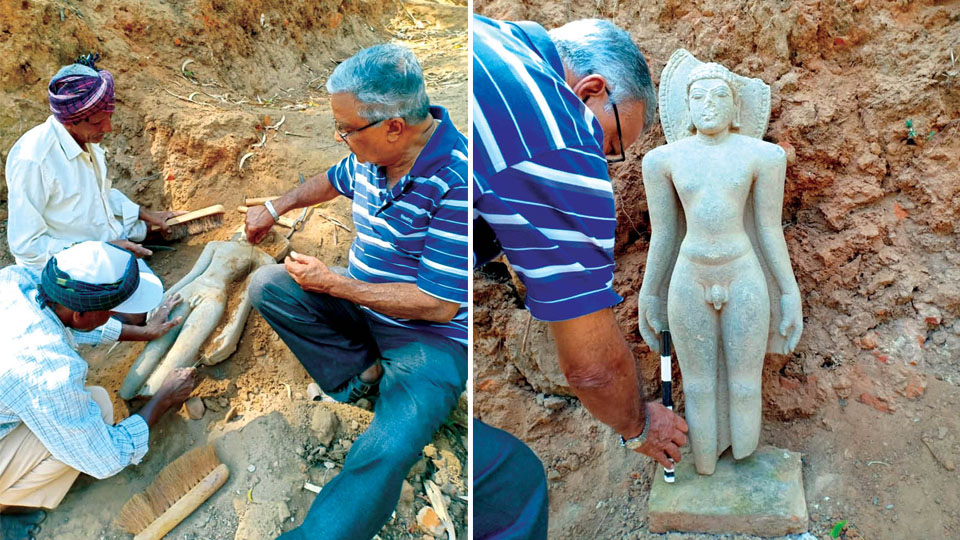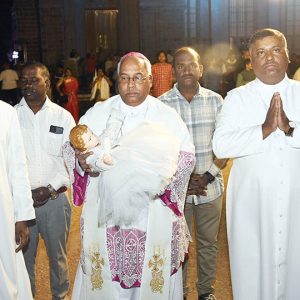Sandstone idol is in ‘Kayotsarga’ posture that literally means “dismissing the body”
Mysuru: A seventh century Ganga Dynasty idol of Parshvanatha stone sculpture has been discovered at historic place of Talakad in T. Narasipur taluk in the district.
The excavation is being conducted by former University of Mysore Professor M.S. Krishnamurthy and Department of Archaeology and Museums Assistant Directors Dr. R. Gopal and Dr. Manjula in Talakad and found the stone idol of Parshvanatha near a Jain temple.
Prof. Krishnamurthy is the former Chairman of Department of Ancient History and Archaeology, University of Mysore.
The stone sculpture, about four ft to five ft height, belonged to seventh century Ganga dynasty. The Department of Archaeology and Museums has taken up excavation in Rajaghatta at Doddaballapur, Talakad and Hampi across the State.
Dr. Gopal said that the sandstone idol was recovered near a Jain Basadi site. The excavation is being undertaken on the left side of Jain Basadi in Talakad. The idol is in ‘Kayotsarga’ pose, a yogic meditative posture in the Jain tradition and idols generally represent a Thirthankara in standing or seated posture, he said.
‘Kayotsarga’ literally means “dismissing the body” or to give up one’s physical comfort and body movements”, thus staying steady, either in a standing or other posture, and concentrating upon the true nature of the soul.
It may be recalled here that about four years ago the State Archaeology Department had begun excavation in and around the historic and ancient site of Talakad looking for clues about earlier human habitation.
The place is well-known for historical monuments that date back to 5th Century AD. Gangas were in power there then.
The Department had begun excavations in 2010 as part of its regular and seasonal activities. For some reason, the excavation works were stalled and now the works have started as the Department has received the green signal for excavations from Archaeological Survey of India (ASI).








Recent Comments